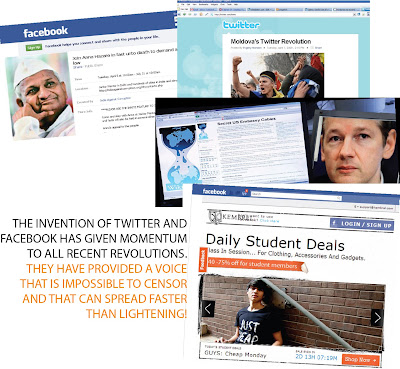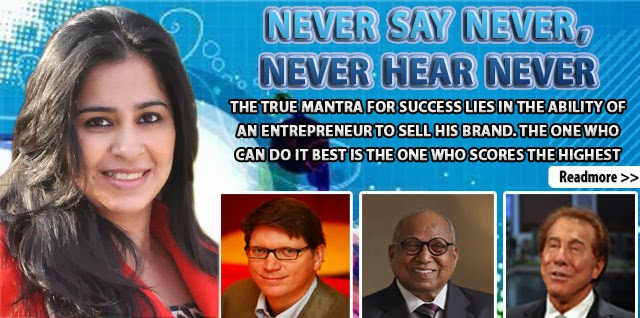Consumer Maange More!
The times are changing and so is the customer. The culprits are technology and the Internet. Thanks to them, things are changing at breakneck speed for marketers as the Internet and the technological revolution has made the consumer want more and more and there seems to be no stopping. In the early days, it was all about identifying the needs and wants of the consumer and trying to satisfy those needs with the right product. That product was then wrapped around an alluring message highlighting the benefits of the product and how it would change the life of the buyer. That’s all changed now. Today, it’s no more just about the product, its benefits and the branding message; it’s about the ability of the brand to connect with the consumer, to build a lasting relationship with the consumer. And that has become a difficult task for the consumer of today is insatiable and ‘maange more’ before he trusts you with his loyalty. Consumer maange more value Marketing was all about building a brand and giving people value for money. That’s not enough today. The consumer of today wants more than just ‘value for money’. He also wants to know what values you as a brand stand for. More than 80% of consumers believe that a good brand is one which places equal emphasis on both business profits and societal issues. Your brand should stand for a purpose beyond profits. It should have a purpose driven brand story. Responsible consumption is the buzz word today. With our world being plagued with problems like global warming, water scarcity, obesity etc., the consumers are becoming aware of the role companies and brands can play to make the world a better place. By supporting brands with a strong purpose, they feel they are doing their bit too to make the world happier, healthier, greener and cleaner.
Take the case of Kissan. It decided to source sustainably produced tomatoes, which not just differentiated the brand but soon made it the number one ketchup brand in India. The Lifebuoy brand of soap ran a campaign called “Help a Child Reach Five”, which focused on teaching children how to wash their hands correctly as India has the highest number of child deaths due to diarrhea and pneumonia. The brand developed a hand wash which could change its color from white to green in 10 seconds – just the time required to kill most of the germs. Children wait to see the color change, which is not just fun but life saving too! The brand showed its commitment to a purpose, a cause, and was loved for it. Nike’s “Find Your Greatness” campaign went beyond celebrity athletes and urged people to find greatness in everyday people. It struck a chord with the viewers and inspired them. Brands are moving on beyond just showing the benefits of their product. Rin is a good old brand which for decades has promised ‘Chamakti Safedi’. That’s not enough to stay above competition. Rin has gone a step ahead. While clean clothes give you confidence, Rin has gone on and started a Rin Career Academy, training people in key skills which give them confidence. Skills like speaking good English, dressing appropriately for a job, handling an interview. Rin has shown that it is totally committed to building confidence. That’s a purpose which goes beyond profits. Patagonia is a brand that makes money by selling clothes, yet when it launched its ad campaign, it was all about encouraging people to repair their old outdoor garments. The ad provided a lot of tips and tools to help the users fix their own gear. It even offered to buy back gently used garments. Marketers at Patagonia are very clear that it’s the era of unconventional marketing. A brand that can market itself as one supporting a cause, supporting sustainable development would be noticed and liked much more than a brand that made fabulous, yet ‘harmful to the planet and its people’ products. To show how committed it is to its purpose, Patagonia established a $20 million venture fund to invest in socially and environmentally responsible startups. Whole Foods is another brand that has shown that it stands for sustainable development and sensible consumption. It has a concept called “Community Giving Days” where 5% of that day’s net sales are given to local non-profits. All through, consumers have been let down by their governments, their leaders, their NGOs who have failed to bring about a positive change in their lives. These consumers are now looking up at brands who have the power, the money, the creativity to help change this world for the good. These are the B Corps – ‘Benefit Corporations’ – who are going to rule in the future and its their marketing campaigns that the consumers will like, and share and believe in. A purpose-driven brand also has the most positive and motivated employees who are proud to say that they work for a brand that believes in something beyond profits. LRXD is a full service agency but it calls itself the ‘health and happiness advertising agency’ for it took a policy decision to primarily work for brands that helped make life better. Made Movement, an agency founded in 2012, decided it would work for brands that provided jobs to people in the US. Their purpose made them reject work from a lot of big brands, but they say life has never been better for they have a reason to wake up every morning and come to work. According to a 10-year-long study conducted by Millward Brown and Jim Stengel, brands which focused on a higher purpose did not just build the deepest relationships with customers, but also achieved the greatest financial growth in the 10 year period of the study. It’s no more about what you sell; rather, it’s more about what you as a brand and an organization stand for. So give the customer not just a great product but a great product that also does great things and he will be your greatest fan and friend! Customer maange more speed The consumer wants everything now and if you want his loyalty, you need to cope up with his demands. Take for example the purchase behavior of customers. Gone are the days when he would wait for the shop to open and buy. Today, he wants to buy whenever he pleases (thanks to e-commerce) and add to that the fact that he wants his shopping delivered at the soonest. While shopping online, a delivery period of two to three days was acceptable some time back. Now, he wants same-day-delivery. Soon, he would want everything delivered at his doorstep as fast as a pizza. The consumer of today not just shops any time of the day, but is texting and messaging his friends at all hours. Soon, he would want to text and receive texts from companies. A recent survey by Corvisa (a cloud communications provider) found that 77% of consumers were okay with getting text

messages from companies and in fact liked it if the companies texted them about things like fraud alerts, payment reminders, sales, discounts, promos etc. If you as a marketer can use this tool to engage with your customer, there is no better way to build a long lasting relationship. He texts you like he would a friend and you text him back – that is the speed of communication you should be prepared for. Gone is the concept of ‘contact during office hours only’. If you want to retain your market share, you need to behave just like your customer wants you to or else some other young brand will replace you. Speedy deliveries, speedy text responses will see your profits speeding up! Customer maange more connection Marketing is no more a ‘one-to-many’ style of communication; rather, it’s now all about one-to-one. From being a monologue – where the marketers spoke and the consumers listened – now, it’s a dialogue. The consumer speaks and the marketer is expected to listen and respond if he wants to build a long lasting relationship. Not just that, the customer also likes to be spoken to about things he enjoys. Hence the rise of ‘programmatic advertising’. One ad, however brilliant, will not work any more. Soon, marketers would be expected to customize and make multiple advertisements to suit the tastes of different types of customers, and technology is making it possible to do this. Programmatic buying identifies users and groups them according to the sites they browse and then offers them advertisements and promotional materials of products and services that match their habits and tastes. There is growing evidence that consumers are getting bored and irritated with advertisements that don’t interest them. With the help of technology, now marketers can identify the choices of the target consumers and place their ads in front of only those who are interested in that particular product or service. Brands like Nike, KLM Royal Dutch Airlines and Kia Automobiles are using programmatic buying to micro-target their audience and send them ads customized to suit their tastes and build better connections with them. The Future As a consequence, the whole environment is changing. A marketer needs to look beyond his marketing campaigns and promotions and focus more on the very tech-savvy consumer and his overall experience vis-à-vis the brand. Be it the online visit experience, the in-store shopping experience, the purchase experience and even the post-purchase experience, he needs to understand the big data, its analysis, interpret the results wisely and make the required changes to help improve these experiences. As marketers, you need to find out who are the social influencers, and try to make them your ‘digital brand ambassadors’. As a vigilant marketer, you also have to keep track of conversations happening on the social media. Thanks to the developments in technology, today’s marketers have a huge amount of data detailing the digital lives of their customers, giving them extraordinary power. They can now run sharply focused campaigns, reach their target audience much more accurately, respond to disgruntled customers with greater speed, get deep and accurate insights into the purchase patterns of their customers. Everybody wants to do good, but then, not everybody can. If you combine your business profits with purpose, you don’t just win a lot of goodwill from your customers, but you also help them satisfy that latent need within them of giving back something to the society, which is very fulfilling and satisfying. Soon, no one would care about the S&P 500 list or the Fortune 500 list; but they would demand a Helping the Unfortunate 500 list, for the latter would be a list of companies who would be making a difference to the planet and not just their balance sheets. So go ahead, use technology to understand your market better, add a purpose to your marketing campaign, unleash your creativity and delight your audience like never before, and give him more than the conventional dose of marketing. Give him a dream and a hope of a better world!





Comments
Post a Comment